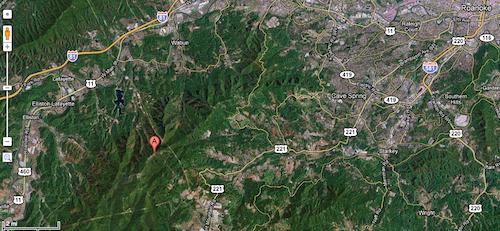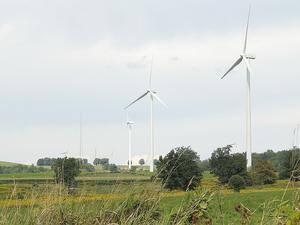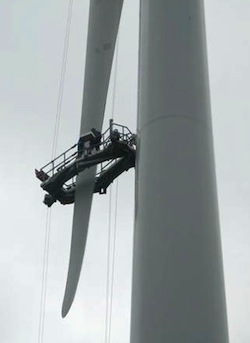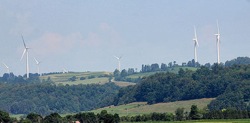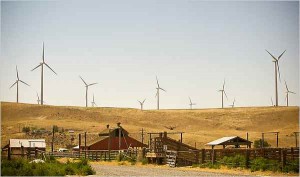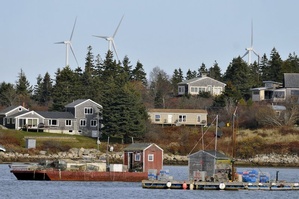Wind turbine manufacturers aim to reduce noise
Effects of Noise on Wildlife, Human impacts, News, Wind turbines Comments Off on Wind turbine manufacturers aim to reduce noiseTwo recent articles in trade magazines caught me up on efforts taking place within the wind power industry to reduce the noise levels of wind turbines. While it’s great to know it’s on everyone’s mind, it also appears that so far, noise reductions are modest.
In the July 2011 issue of North American Windpower (back issues not available for online reading, sorry to say), one of the feature articles was “Turbine Manufacturers Focus on Reducing Noise Emissions.” It included discussions with reps from most of the major turbine manufacturers, and was full of fascinating hints of ongoing research. As the article noted:
As the so-called “low-hanging fruit” of land with good wind and transmission access gets used up and wind turbines move closer to residential areas, noise concerns are expected to become more prevalent, according to wind turbine manufacturers.
“It’s on the top of the minds for all manufacturers,” said Paul Thompson, commercial director of Mitsubishi’s wind turbine group, “we’re all doing things to reduce the amount of noise that’s generated.” GE’s Henrik Stiesdel stressed that wind turbines do “have a noise impact. The main remedy is to ensure that they are not sited to close to dwellings. If that’s not possible because you are in a densely populated area, then we have remedies where we control the power output when conditions are such that noise might be exceeding limits.” The article describes this system:
GE’s sound power management (SPM) works by optimizing control setting based on real-time wind conditions, according to Sean Fitzgerald. The SPM option can be configured for day and night modes, at angular intervals depending on the mode switching and based on wind turbine placement. “These applications enable the customer to specify the appropriate, desired sound emission characteristics by customizing the sound power curve to the precise requirements over the entire wind speed range,” Fitzgerald tells NAW.
Gamesa’s Miguel Angel Gonzalez-Posada notes that there’s a trend of having to keep noise as low as possible near populated areas, especially at night.

